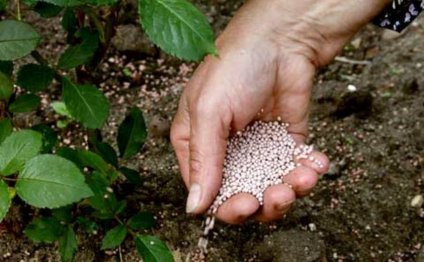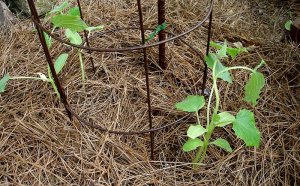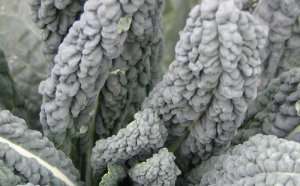
Malin Feed
Typically, the small must be fed three times throughout the vegetation period.
First feed time is May.
To this end, many dorms use crustacean scattered in water at a rate of 500 ml per 10 l respectively. It's 5 litres per metre of landing.
If, after that, the small craftsmen still look weak, at the beginning of the summer it is worth feeding them by a table prepared on the basis of a bird-to-metre (1 part per 12 parts of the water) or manure (1 part per 5 parts of the water) at 10 litres per 5 bits.
The second malinic feed is performed during the fertilization of the handicraftsmen.
As a rule, this time falls out at the beginning of July. IDEAL fertilizer, dissolved in water at a rate of 2-3 plots per 10 litres of water with a pair of nitrophosky spoons, is used as " treating " . The cost of such equipment shall be approximately 7 litres per metre of a number of manifolds.
The third time we need to feed the baby in August. The potassium sulphate would be appropriate. 2 St.l. substances are dissolved in 10 litres of water and watered by handicraftsmen at 7 litres per metre of a range of malinics.
Malene feeding: advice on horticulture mark:
Above-containing feeds are famous for their ability to acidify the soil. Since the malice does not produce acid soils, once nitrogen fertilizers have been produced, a small amount of ash (one glass) must be placed under the root of each craft.
Feeding using nitrogen fertilizers should be stopped immediately after the end of the fertilization period.
There is no need to use potassium fertilizers containing chlorine as a feed. It is the last component that causes ancestral infections such as chlorine.
It's advisable that every year the bed of the mall be covered. Ideally floating " materials " will serve manure or compost.
Malin feed during landing
Before the landing of the seeder, 8-Y kg of bulk, 80 grams of silver potassium and 200 grams of superphosphate (two of the last two pieces can be replaced by 500 g of ash), then all the said components with soil are mixed. The artisanal's roots are being released first to the solution of the cow (should and transplant) so that the plant ' s food is improved and then placed in the pit and buried in the ground.
Share this Post
Related posts
Heat Cucumbers
For the first fifteen days, the cucumbers need enhanced care and nitrogen food, and after the flower begins, nitrogen is…
Read MoreAll Kinds Of Cabbage
It s in the middle of the day, and it s the best of the business. All the windows have been set up with a variety of stitches…
Read More









